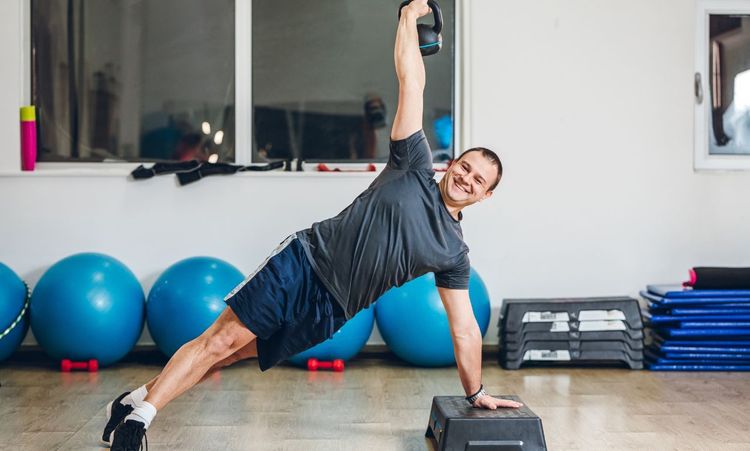Are you looking to transform your health without expensive supplements or complicated diets? The answer might be simpler than you think: regular physical activity. Exercise isn't just about sculpting your body or training for marathons—it's a powerful tool that can revolutionize your overall well-being unexpectedly. Let me explain the life-changing benefits of regular physical activity and show you practical ways to incorporate more movement into your daily routine.
Reduce Your Health Risks
According to the American Heart Association, just 150 minutes of moderate exercise weekly can reduce your risk of heart disease by up to 35%. That's less time than most people spend scrolling through social media daily!
Regular physical activity helps:
- Lower blood pressure and improve cholesterol levels
- Reduces inflammation throughout the body
- Strengthen your immune system's response to threats
- Decrease your risk of certain types of cancer
The protective effects of exercise are so powerful that researchers from the Harvard T.H. Chan School of Public Health found that people who meet the recommended physical activity guidelines have a 20-30% lower risk of premature death than inactive individuals.
Increase Your Energy Levels

When you engage in physical activity, your body responds by becoming more efficient at delivering oxygen and nutrients to your tissues through improved heart and lung function.
A study published in the Journal of Psychotherapy and Psychosomatics found that regular, low-intensity exercise reduced fatigue by 65% in previously sedentary people who reported persistent tiredness. The energy boost from exercise comes from improved mitochondrial function—these tiny powerhouses in your cells create the energy your body needs to function.
Weight Management
While nutrition remains fundamental to weight control, physical activity offers unique benefits that diet alone cannot provide.
When I first started focusing on my health, I was surprised to discover that adding 30 minutes of brisk walking to my daily routine helped me lose 15 pounds over six months—without making any other changes to my diet. The science behind this is straightforward: regular exercise increases your metabolic rate, which means you continue burning calories even after your workout.
Beyond calorie burning, exercise—particularly strength training—builds lean muscle mass. Since muscle tissue burns more calories than fat tissue (even at rest), developing more muscle naturally increases one's daily calorie expenditure.
Reduce Your Risk of Chronic Disease
Chronic diseases like type 2 diabetes, heart disease, and metabolic syndrome are increasingly common in our sedentary society. Regular physical activity works as a powerful preventative measure against these conditions.
Exercise improves insulin sensitivity, helping your body use glucose more effectively. Research published in the Journal of Applied Physiology demonstrates that even a single session of moderate exercise can improve glucose regulation for up to 24 hours in people with insulin resistance.
For heart health, regular activity strengthens your cardiac muscle, improves circulation, and reduces arterial plaque buildup. The American College of Cardiology reports that regular exercise can lower your risk of cardiovascular events by up to 50%.
Improve Skin Health
Physical activity increases blood flow, which delivers more oxygen and nutrients to skin cells while helping remove waste products.
Exercise-induced improvements in circulation can give your skin a natural, healthy glow while promoting the production of natural oils that keep skin supple and youthful. Additionally, the stress-reducing effects of exercise may help improve conditions like acne and eczema, which can flare during times of high tension.
Some researchers believe that moderate exercise may even help delay the appearance of visible aging by optimizing hormone levels and reducing oxidative stress in skin cells.
Boost Brain Health and Memory
Physical activity stimulates the production of brain-derived neurotrophic factors (BDNF) proteins, which support the growth of new neurons and protect existing brain cells.
Regular aerobic exercise has increased the size of the hippocampus, the brain region involved in verbal memory and learning. A landmark study in the Proceedings of the National Academy of Sciences found that regular moderate exercise increased hippocampal volume by 2%, reversing age-related brain shrinkage by 1-2 years.
Even brief bouts of activity can help with cognitive performance. Research from the University of British Columbia found that just 20 minutes of moderate exercise improves information processing and memory function.
Relax Muscles and Bones
Activities like walking, jogging, dancing, and resistance training place healthy stress on your bones, stimulating cells called osteoblasts to build new bone tissue.
This becomes increasingly important as we age, particularly for women after menopause, when declining estrogen levels can accelerate bone loss. The National Osteoporosis Foundation recommends regular weight-bearing exercise and muscle-strengthening activities to maintain skeletal health and reduce fracture risk.
Regular stretching and mobility exercises help maintain joint function, reduce stiffness, and improve overall flexibility. This translates to better posture, fewer injuries, and greater ease in performing daily activities.
Reduce Pain
For people with arthritis, low-impact activities like swimming, cycling, and tai chi can reduce joint pain and stiffness while improving mobility. Research published in the Annals of Internal Medicine found that regular exercise was as effective as prescription medications for relieving lower back pain in many patients. The key mechanisms include strengthening supportive muscles, improving flexibility, and triggering the release of endorphins—the body's natural pain relievers.
Enhances Relaxation and Sleep Quality
Regular physical activity has been shown to help people fall asleep faster, spend more time in deep sleep, and wake feeling more rested.
A study from the Sleep Foundation found that people who exercised regularly experienced up to 65% improvement in sleep quality. The sleep-promoting effects appear to result from exercise's ability to reduce anxiety and depressive symptoms while helping regulate your circadian rhythm.
Aim to complete moderate to vigorous exercise at least 1-2 hours before bedtime for optimal sleep benefits. This will allow your body temperature and heart rate to decrease before sleep.
Makes You Feel Happier

The mood-boosting effects of exercise are so powerful that doctors now prescribe physical activity as a first-line treatment for mild to moderate depression. When you exercise, your body releases endorphins, dopamine, and serotonin—neurotransmitters that create feelings of happiness and well-being.
Even short bursts of activity can lift your mood. A study in the Journal of Happiness Studies found that just 10 minutes of physical activity significantly improved participants' mood states compared to no activity.
Beyond the immediate chemical effects, exercise provides psychological benefits through increased confidence, social connection, and the satisfaction of setting and achieving goals.
How Does Exercise Play a Role in Improving Public Health?
From a broader perspective, increasing physical activity across populations represents one of the most effective public health interventions available. The World Health Organization estimates that physical inactivity is responsible for approximately 3.2 million deaths annually worldwide.
Communities prioritizing walkability, bike lanes, public parks, and recreational facilities typically report better overall health outcomes and lower healthcare costs. Workplace wellness programs that encourage movement throughout the day show reduced absenteeism and increased productivity.
Public health initiatives focused on increasing activity levels have demonstrated remarkable results. For example, Finland's North Karelia Project, which promoted physical activity alongside dietary changes, contributed to an 80% reduction in cardiovascular disease mortality over 30 years.
What Are the Best Types of Exercise?
The ideal exercise program combines four key components:
Aerobic Exercise
Walking, running, swimming, and cycling elevate your heart rate and improve cardiovascular fitness. Aim for at least 150 minutes of moderate-intensity or 75 minutes of vigorous-intensity aerobic activity weekly.
Aerobic exercise provides the broadest range of health benefits and forms the foundation of any balanced fitness program. If you're new to exercise, start with brisk walking—it requires no special equipment and carries a low risk of injury.
Strength Training
Resistance exercises maintain and build muscle mass while supporting metabolic health. Include activities that challenge all major muscle groups at least twice weekly.
Strength training doesn't necessarily require gym equipment—bodyweight exercises like push-ups, squats, and lunges can be efficient. As you progress, consider adding resistance bands or free weights for additional challenges.
Flexibility Exercises
Stretching maintains joint mobility and muscle elasticity. Include dynamic stretches before exercise and static stretches afterward.
Yoga and Pilates offer structured approaches to improving flexibility, building core strength, and enhancing body awareness.
Balance Activities
Balance exercises are particularly important as we age. They reduce fall risk and improve coordination. Simple practices like standing on one foot or heel-to-toe walking can be incorporated into daily routines.
The best exercise program is ultimately the one you'll stick with consistently. Focus on activities you enjoy, start gradually, and build intensity over time.
How to Be More Active Every Day
Incorporating more movement into your daily life doesn't necessarily require significant time commitments or radical lifestyle changes. Minor adjustments can accumulate to create meaningful health benefits:
- Take the stairs instead of the elevator when possible
- Park farther from entrances to add short walks to your day
- Schedule walking meetings instead of sitting in conference rooms
- Set a timer to stand and stretch for 2-3 minutes every hour
- Choose active family activities like hiking or bike riding on weekends
I've found that "activity snacking"—short bursts of movement throughout the day—works beautifully with my busy schedule. A quick set of squats while waiting for coffee to brew or a 5-minute walk around the block between calls adds up surprisingly fast.
What Exercises Are Best for Heart Health?

Cardiovascular exercise, as the name suggests, directly benefits your heart. The American Heart Association recommends focusing on activities that:
- Elevate your heart rate to 50-85% of your maximum (roughly calculated as 220 minus your age)
- Can be maintained continuously for at least 10 minutes
- Engage large muscle groups through rhythmic movements
Walking briskly, jogging, swimming, cycling, and rowing are excellent options. High-intensity interval training (HIIT)—alternating short bursts of intense activity with recovery periods—has also shown remarkable benefits for heart health, often in less total exercise time.
Low-impact activities like water aerobics or stationary cycling may be safer starting points for people with existing cardiovascular conditions. If you have heart-related concerns, consult your healthcare provider before beginning a new exercise program.
Conclusion
The evidence supporting exercise as a fundamental component of good health is overwhelming. Regular physical activity offers a remarkable return on investment for your time and effort, from reducing disease risk and boosting energy to improving mood and cognitive function.
Remember that consistency matters more than intensity, especially when starting. Even modest amounts of regular activity can produce significant health benefits. The key is finding activities you genuinely enjoy and creating sustainable habits that work with your lifestyle.
Your body was designed to move. Honoring that design through regular physical activity unlocks your potential for greater energy, resilience, and joy in everyday life.




